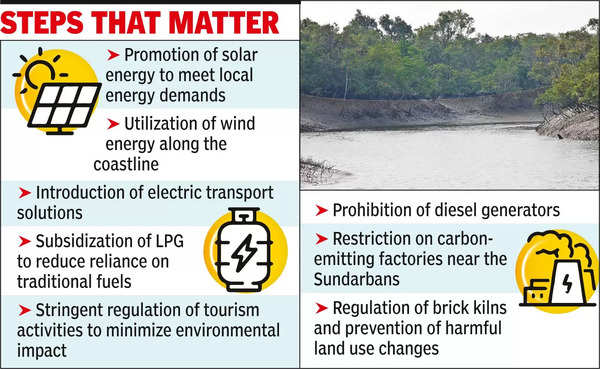Air pollution is threatening the Sundarbans, a critical mangrove ecosystem in Bengal, at an alarming rate, a recent study has revealed. Researchers have laid bare how vast quantities of pollutants, primarily laden with black carbon or soot particles, originating not only from just Kolkata but the entire Indo-Gangetic Plain region, are significantly deteriorating air quality in the Sundarbans, thus affecting its delicate ecosystem.
The study — titled ‘Acidity and oxidative potential of atmospheric aerosols over a remote mangrove ecosystem during the advection of anthropogenic plumes’ — was spearheaded by Abhijit Chatterjee from the department of chemical science at Bose Institute, Kolkata, in collaboration with Abhinandan Ghosh from IIT Kanpur, who served as the lead author. The research team, including Monami Dutta, Sanat Kumar Das from Bose Institute and Mukesh Sharma from IIT-Kanpur, published their findings in the Elsevier journal ‘Chemosphere’ in March 2024.

The study uncovered that pollutants transported from the Indo-Gangetic Plain, coupled with localized sources such as biomass burning and emissions from local boats, contribute to the high levels of suspended particulate matter (PM) in the Sundarbans. Notably, antiquated motors in local boats emerged as a major source of heavy toxic metals in the air.
Of grave concern is the revelation that the acidic components of PM 2.5 pollutants foster the generation of reactive oxygenated species (ROS) in the presence of heavy metals. This overproduction of ROS surpassing the tolerance of any living organism poses a severe threat to the mangrove cells.
Abhijit Chatterjee explained: “Coastal ecosystems typically employ a series of antioxidants to mitigate ROS and toxic stress. However, prolonged exposure to heavy metals could compromise their resilience, leading to cellular damage in mangroves.”
The study found that despite its sparse population, the Sundarbans faces oxidative stress akin to many urban areas. “Our research demonstrates the substantial influence of transported and regionally emitted air pollutants on the ecology and biogeochemistry of the Sundarbans mangrove ecosystem, necessitating urgent attention,” Chatterjee asserted.
The Sundarbans mangrove ecosystem assumes a significant role in climate change mitigation, serving as a net absorber of greenhouse gases and boasting a higher potential for atmospheric carbon absorption than the Amazon rainforest. Chatterjee emphasized that pollution-induced stress jeopardizes this equilibrium, weakening the ecosystem’s resilience against calamitous events.
Highlighting the plight of marginalized communities inhabiting the Sundarbans, he added: “These communities contribute minimally to global warming yet bear the brunt of pollution- and climate change-induced catastrophes.”
With a population of 4.5 million inhabitants, framing policies to address pollution in this ecologically sensitive area remains a formidable task, said Abhinandan Ghosh of IIT-Kanpur.